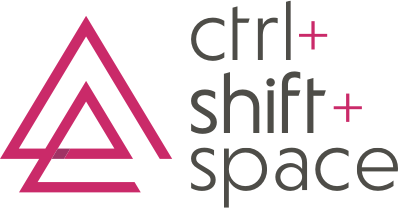There’s a direct link between office design and business performance. The right type of workplace is a company’s foundation for a high-performing workforce and more effective, happy and creative employees.
So what is the right type of workplace? Although there’s no one-size-fits-all solution, the commercial design community is seeing a trend toward an ever-pressing need to create future workplaces that provide the ultimate employee experience.
“Designing for experience” was the topic of a recent innovation workshop between workplace designers, real estate execs, facility management professionals, architects, consultants and HR/leadership experts.
One of the attendees at this two-day conversation and brainstorming session, which was put on by IFMA, was our knowledgeable friend and design expert Allyson Strowbridge. (She helps clients transform their offices with her firm, ctrl+shift+space.)
We asked her to boil down the two-day conversation and give us the scoop on where workplace designers will be focusing in the future. Here’s what she shared with us.
Emerging Technology
Allyson believes technology is “the most critical component in a work environment that must be proactively planned for.”
Offices once had bulky desktop computers and hundreds of wires. Now we have mobile devices and 60-inch flatscreens. Future office spaces need to be designed with an emphasis on including various forms of technology that are easy to use and reliable, like cloud-based collaboration and videoconferencing tools to connect remote workers, according to Allyson.
In the Office of the Future: 2020 Survey and Report, other technologies that will change the workplace and the way people work in the emerging years are sensory-recognition software, smart devices, miniature wireless communication tools and “knowbots.”
Fully Flexible
Workspaces need to be flexible in shape, function and furniture.
Allyson commented that “highly productive and engaging work and gathering places will not only be flexible in shape, but will also provide a variety of multi-purposed, functional areas where people of all worker-types (e.g. full/part-time, remote, contract) and personality types (e.g. introvert/extrovert, analytical/driver) can engage, share, create and innovate with one another.”
She continued, “Suites and buildings will move toward more of a ‘loose-fit’ shell with modular and alterable elements becoming more of the norm.”
Companies will want to include different moveable components, like adjustable desks, so employees can choose to sit or stand as they work, as well as spaces that can easily transform from a lunch room to a conference room to a space for holiday parties thanks to extendable tables and walls that descend from the ceiling.
Interior design components that are functional and flexible can be used and reused for different employees, teams and tasks. This approach helps businesses be ready to adapt to changing workplace trends and fluctuations in their own employees’ needs and headcount.
Restorative Spaces
Providing the ultimate employee experience means you have to design your office for the people who work there. And people sometimes need private, distraction-free places to get their heads-down work done – places that are in short supply in many of today’s open office plans.
So commercial designers (and employee-centric businesses) are thinking about how to give employees the flexibility to move to a quiet space when quiet time is needed or work in whatever space is best for them or their current task.
Allyson said, “Individual employees will come and go, yet there are some basic human needs that offices of the future will all need to address no matter who or what type of persona makes up the company community.”
“For instance, having access to distraction-free spaces where individuals can have alone time to reflect, decompress and be ‘off-view’ from others will continue to drive strategies for how to include restorative spaces in a floor plan.”
Nearly every employee needs privacy at some point during their workweek, whether it’s to improve concentration or to control the information they’re sharing with their team, which is why restorative spaces are a must-have in future workplaces.
As you think about designing for a better employee experience, Allyson says the most essential element that companies should consider is how to make workspace more human-centered, “from a psychological perspective in addition to the other, usual creature comforts.”
Seems like solid advice to us.


